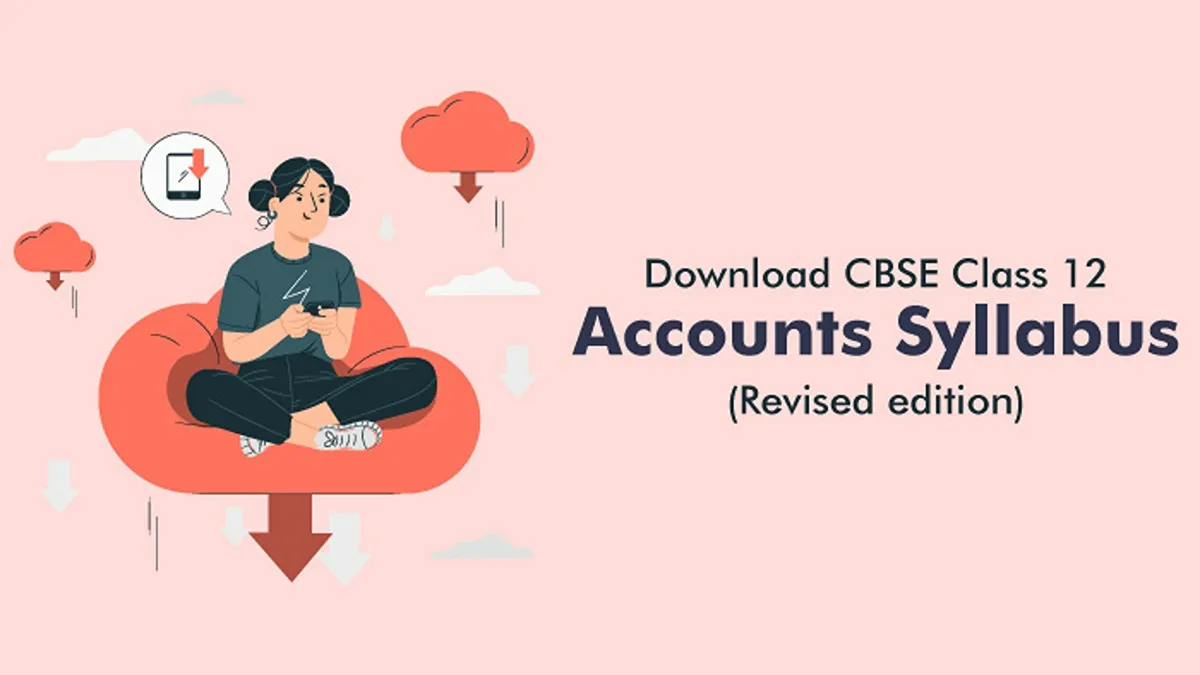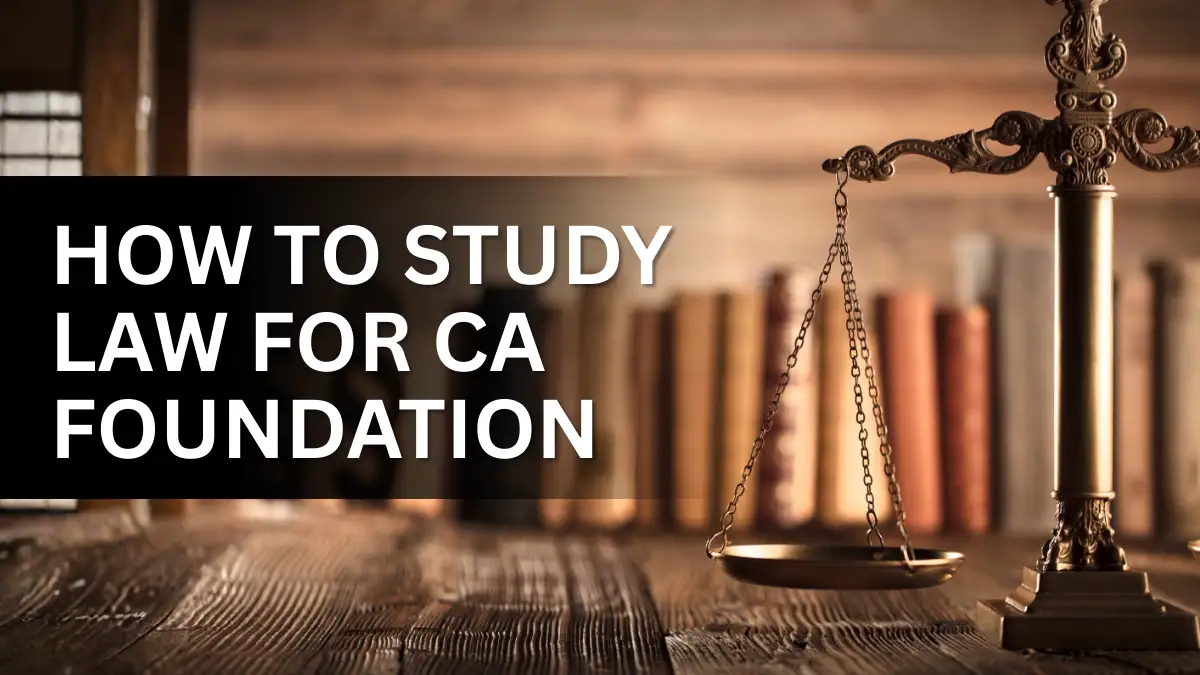Accountancy is an essential subject for commerce students. You should not only focus on scoring marks but also learn the theories and concepts of the subject. CBSE Class 12 Accounts Syllabus will help you a lot in your further education if you plan to make a career in the commerce field (like becoming a Chartered Accountant) because CBSE has designed the curriculum to prepare your knowledge base for higher studies.
The CBSE Class 12th Accounts Syllabus is updated every year. However, CBSE has specially made a big change for class 12 students. 30% of the topics have been removed from the new Accountancy syllabus for class 12.
CA Wizard brings to you the new CBSE Class 12 Accounts Syllabus in this article. and you can also join the best 12th commerce classes for better reading of Accounts. We also have some essential tips for you in the article. You can also download the PDF versions from the links provided.
CA Wizard provides the latest updates related to CBSE class 12th exams. We also help class 12 students in their career after 12th. We have provided complete information on the CA course. It is the best career option right now as the demand for CA is on the rise.
Marks Weightage in CBSE Class 12 Accounts
| Units | Topics | Marks |
| Part A | Accounting for Partnership Firms and Companies | |
| UNIT 1 Accounting for Partnership Firms | 36 | |
| UNIT 2 Accounting for Companies | 24 | |
| 60 | ||
| Part B | Financial Statement Analysis | |
| UNIT 3 Analysis of Financial Statement | 12 | |
| UNIT 4 Cash flow Statement | 08 | |
| 20 | ||
| Part C | Project Work | |
| Project Work Will Include: | ||
| Project File | 04 | |
| Written Work (one hour) | 12 | |
| Viva Voice | 04 | |
| OR | ||
| Part B | Computerized Accounting | |
| UNIT 4 Computerized Accounting | 20 | |
| Part C | Practical Work | 20 |
| TOTAL | 100 |
Question Paper Design
| Typology of Questions | Marks | Percentage |
|---|---|---|
| Remembering and Understanding | 44 | 55% |
| Applying | 19 | 23.75% |
| Analysing, Evaluating and Creating | 17 | 21.25% |
| Total | 80 | 100% |
CBSE Class 12 Accounts Syllabus 2023-24
Part A: Accounting for Partnership Firms and Companies
Unit 1: Accounting for Partnership Firms
- Partnership: features, Partnership Deed.
- Provisions of the Indian Partnership Act 1932 in the absence of partnership deed.
- Fixed v/s fluctuating capital accounts. Preparation of Profit and Loss Appropriation account- division of profit among partners, guarantee of profits.
- Past adjustments (relating to interest on capital, interest on drawing, salary and profit sharing ratio).
- Goodwill: nature, factors affecting and methods of valuation – average profit, super profit and capitalization.
Note: Interest on partner’s loan is to be treated as a charge against profits. Goodwill to be adjusted through partners capital/ current account (AS 26)
Accounting for Partnership firms – Reconstitution and Dissolution.
- Change in the Profit Sharing Ratio among the existing partners – sacrificing ratio, gaining ratio, accounting for revaluation of assets and reassessment of liabilities and treatment of reserves and accumulated profits. Preparation of revaluation account and balance sheet.
- Admission of a partner – effect of admission of a partner on change in the profit sharing ratio, treatment of goodwill (as per AS 26), treatment for revaluation of assets and reassessment of liabilities, treatment of reserves and accumulated profits
- Retirement and death of a partner: effect of retirement / death of a partner on change in profit sharing ratio, treatment of goodwill (as per AS 26), treatment for revaluation of assets and reassessment of liabilities, adjustment of accumulated profits and reserves and preparation of balance sheet.
- Calculation of deceased partner’s share of profit till the date of death.
- Dissolution of a partnership firm: meaning of dissolution of partnership and partnership firm, types of dissolution of a firm. Settlement of accounts – preparation of realization account, and other related accounts: capital accounts of partners and cash/bank a/c (excluding memorandum balance sheet, piecemeal distribution, sale to a company and insolvency of partner(s)).
Note:
(i) The realized value of each asset must be given at the time of dissolution. (ii) If the realized value of intangible assets is not given it should be considered as nil (zero value).
(iii) In case, the realization expenses are borne by a partner, clear indication should be given regarding the payment thereof.
Unit -2 Accounting for Companies
Accounting for Share Capital
- Features and Types of companies
- Share and Share Capital: Nature and types
- Accounting for share capital: issue and allotment of equity and preferences shares. Public subscription of shares – over subscription and under subscription of shares; issue at par and at premium, calls in advance and arrears (excluding interest), issue of shares for consideration other than cash.
- Concept of Private Placement and Employee Stock Option Plan (ESOP).
- Accounting treatment of forfeiture and reissue of shares.
- Disclosure of share capital in the Balance Sheet of a company.
Accounting for Debentures
- Debentures: Issue of debentures at par, at a premium and at a discount. Issue of debentures for consideration other than cash; Issue of debentures with terms of redemption; debentures as collateral security concept, interest on debentures. Writing off discount / loss on issue of debentures.
Note: Discount or loss on issue of debentures to be written off in the year debentures are allotted from Security Premium Reserve (if it exists) and then from Statement of Profit and Loss as Financial Cost (AS 16).
Note: Related sections of the Companies Act, 2013 will apply.
Part B: Financial Statement Analysis
Unit 3: Analysis of Financial Statements
Financial statements of a Company: Meaning, Nature, Uses and importance of financial Statement.
Note: Exceptional items, extraordinary items and profit (loss) from discontinued operations are excluded.
- Financial Statement Analysis: Objectives, importance and limitations.
- Tools for Financial Statement Analysis: Comparative statements, common size statements, cash flow analysis, ratio analysis.
- Accounting Ratios: Meaning, Objectives, classification and computation.
- Liquidity Ratios: Current ratio and Quick ratio.
- Solvency Ratios: Debt to Equity Ratio, Total Asset to Debt Ratio, Proprietary Ratio and Interest Coverage Ratio.
- Activity Ratios: Inventory Turnover Ratio, Trade Receivables Turnover Ratio, Trade Payables Turnover Ratio and Working Capital Turnover Ratio.
- Profitability Ratios: Gross Profit Ratio, Operating Ratio, Operating Profit Ratio, Net Profit Ratio and Return on Investment.
Note: Net Profit Ratio is to be calculated on the basis of profit before and after tax.
Unit 4: Cash Flow Statement
Meaning, objectives and preparation (as per AS 3 (Revised) (Indirect Method only)
Note:
(i) Adjustments relating to depreciation and amortization, profit or loss on sale of assets including investments, dividend (both final and interim) and tax.
(ii) Bank overdraft and cash credit to be treated as short term borrowings.
(iii) Current Investments to be taken as Marketable securities unless otherwise specified.
Note: Previous years’ Proposed Dividend to be given effect, as prescribed in AS-4, Events occurring after the Balance Sheet date. Current years’ Proposed Dividend will be accounted for in the next year after it is declared by the shareholders.
OR
Part B: Computerised Accounting
Unit 4: Computerised Accounting
Overview of Computerised Accounting System
- Introduction: Application in Accounting.
- Features of Computerised Accounting System.
- Structure of CAS.
- Software Packages: Generic; Specific; Tailored.
Accounting Application of Electronic Spreadsheet.
- Concept of electronic spreadsheet.
- Features offered by electronic spreadsheet.
- Application in generating accounting information – bank reconciliation statement; asset accounting; loan repayment of loan schedule, ratio analysis
- Data representation- graphs, charts and diagrams.
Using Computerized Accounting System.
- Steps in installation of CAS, codification and Hierarchy of account heads, creation of accounts.
- Data: Entry, validation and verification.
- Adjusting entries, preparation of balance sheet, profit and loss account with closing entries and opening entries.
- Need and security features of the system.
Prescribed Books:
Accountancy -I Class XII NCERT Publication
Accountancy -II Class XII NCERT Publication
Accountancy – Computerised Accounting System Class XII NCERT Publication
Revised Project Work and Practical Syllabus
From session 2020-21 onwards, there would be only ONE project (specific) to be prepared.
You can refer to the CBSE guidelines for more information on Part B’s project and Part C’s practical work.
CBSE Guidelines Practical Work Accountancy
Download CBSE Class 12th Accounts Syllabus 2023-24
You can download the PDF of the officially released new syllabus of CBSE Accountancy class 12 from the link below.
Revised CBSE Class 12 Syllabus 2023-24 PDF
Preparation Tips
- CBSE designs the accountancy exam paper at a moderate difficulty level. You should refer to the marking weightage given above in the article to know which topics are important for your exam preparation. Unit two and three of part A are very important as they make up for half of the marks in the accountancy exam.
- To complete the accountancy syllabus before the exam, you should make a proper timeline for your studies.
- Your accountancy project and practical exam are also very important as it consists of 20 marks out of the total marks. You should definitely give some time to this practical work so that you can secure 20 marks in your exam. These 20 marks are easy to score for you and a chance to improve your grades.
- The sample papers and marking scheme given by CBSE for the 2023-24 session is also important for you. Do not forget to solve the sample papers and check your answers with CBSE’s marking scheme. For more practice, solve previous year question papers.
- Most importantly, keep doing regular revisions. You can make short notes for formulas and concepts of certain chapters and units or the whole syllabus for quick revision.
FAQs CBSE Class 12 Accounts Syllabus
Ques 1: How Many Chapters are there in CBSE Class 12th Accountancy Syllabus?
Ans: There are 11 Chapters in total, Part A consists of 5 chapters and Part B consists of 6 chapters.
Ques 2: Is Class 12 Accounts Difficult?
Ans: Yes, Class 12 Accounts is Considered to be the most difficult subject among all the core subjects of commerce..
Ques 3: Which Books are best for Class 12th Accountancy?
Ans: Name of the books are listed below:
- Tulsian’s Isc Accountancy.
- Advanced Accounts by M.C Shukla.
- Problems & Solutions In Accountancy: Commerce by Dr. SK Singh.
- CBSE Accountancy 11 by Tulsain.
- T.S. Grewal’S Double Entry Book Keeping Class 12.
- NCERT Solutions: Accountancy for Class 12th.
Ques 3: How Many books are there in Class 12th Accounts?
Ans: There are 2 books in Class 12th Accounts
- Partnership Firms and Companies
- Financial Statement and Analysis









